We all know that people can’t remember as much as they could if they use technology like PowerPoint and other presentation tools. While some speakers advocate speaking loudly, others hold that your audience will pay attention to you more if you talk softly.
However, there is disagreement on whether you should begin with a quote, narrative, statistic, or inquiry. One of the distinguishing characteristics of presenters is whether they like to communicate with emotions or data. While some presenters prefer to inspire their audience through emotional connections, others prefer using statistics and analytics.
Several approaches might be appropriate for your presentation. Learn about your options and pick the one that serves you best. Choose the proper ways to use your skills based on the size of your audience and the topic.
1. Visual Presentation

This design is for you if the sole purpose of slides is to support your talking points. With this speaking style, you might work harder to get people interested, but the payoff can be huge for strong public speakers, visionaries, and storytellers.
When speaking to a large group, this style is helpful. Slides will add to your words and give your audience something to look at. Strong public speakers and storytellers that use this delivery style may need to practice more to interest their audience, but the rewards can be enormous.
With slide images, you will get everything necessary, which is one of the best things about a visual presentation. Adding visuals can help you reach your goals twice as often.
2. Instructor Presentation

With the help of metaphors, figures of speech, and a ton of substance, you may communicate complex ideas as your former professors and teachers did. It would be best if you organized your slides logically to enhance and employ high-impact visuals to support your points and keep the audience engaged. If you have a lot of data or statistics, instructor style is the best way to present them.
Consider using the teacher presentation style if you are demonstrating the characteristics of a recently introduced product that you need to familiarize yourself with. Inappropriate use of this style can prevent you from losing your audience’s interest and giving off a cold impression. When you use this method, pay equal attention to both the material and the people watching.
3. Coach Presentation

Use this presentation approach when giving one at a conference and to an audience that needs to feel comfortable. This approach is practical when addressing a group of executives who need to be convinced of the concept behind your company’s operations rather than the specifics of how you carry them out.
Speakers with great enthusiasm and personality tend to adopt this style. It lets them connect with their audience and interact with them through role-play and questions from the audience.
If you want to get the most out of your employees, use this management technique. This strategy is, therefore, perfect if you are about to speak about a subject that interests and inspires you to share with your audience.
Make sure you spend equal time sharing information and receiving input from others. Talk slowly. Take care of your voice and tone.
4. Freestyle Presentation

There are no slides necessary for this kind of informal presentation. Instead, the speaker uses strong stories to show why each point is important. This approach will work best for you if you have a brief presentation window and are very familiar with your talking points.
Speaking in a freeform manner is appropriate in a variety of situations, including networking gatherings, spontaneous encounters, and elevator pitches. You’ll look more scripted and less conversational if you stop during a happy hour to pull up on a tablet.
This presentation technique is most effective for speakers with in-depth subject expertise and limited time. Also, it works best for networking events, elevator pitches, and unplanned meetings. The freeform style needs to be more planned and conversational. Some people who feel limited by rules and structure may find the unstructured presentation exciting.
5. Narrative Presentation

In this styling method, the speaker connects with the audience by telling stories and giving examples. Stories bring your learning points to life, let your thoughts and feelings out and share your story unbiasedly.
It should tell inspirational stories in personality development classes and career planning talks. Those presenters typically possess a natural ability to relate stories and have a rhythmic, passionate delivery of their speeches.
Avoid this style if you are in the discovery phase of the sales process. Instead of constantly referring to yourself or a client, keep focusing on them. This approach works well for conferences, networking gatherings, and sales basic presentations when you have enough time to convey your story without taking too much time away from inquiries.
Regardless of age or gender, telling a story is the most powerful way to present. Presenters can connect with their audience with the help of case studies and hypotheses. Let your feelings show and tell your story as honestly as you can.
6. Takahashi Presentation
Slides aren’t used in the Takahashi style. Instead, texts and speech are. It is a method that uses clean and simple images and substantial text fonts. This style came from Japan and is named after the person who made it, Masayoshi Takahashi.
There are no charts, images, or pictures in it. Short presentations work nicely with this approach. It enables the audience to quickly read and comprehend the subject while concentrating on the text and disregarding the visuals.
Avoiding using graphics and photographs will allow you to create slides with text-based themes quickly.
This solution is for you if you are in Takahashi’s position — without design tools.
7. Lessig Presentation
Lawrence Lessig, a professor of law and leadership at Harvard Law School, came up with the Lessig Style. For this style, the presenter must spend 15 seconds on each slide. When there is text on a slide, it is usually timed to match what the presenter says.
This type works well for big groups and lets the speaker use words and pictures to get their point across. The fast pace and rhythm of the slides keep the audience’s attention, keep them interested, and make it less likely that they will fall asleep.
8. Connector Presentation
During the discovery phase of the sales process, when you’re trying to understand the prospect’s problems, obstacles, and end goals, this is the best approach to use. This method of speaking creates a comfortable environment for the audience, gets immediate feedback on how you’re doing, and resembles a conversation rather than a monologue.
By emphasizing their similarities to their listeners, presenters establish rapport with their audience in this manner. Connectors frequently use gestures and enjoy free-form question-and-answer sessions. They strongly encourage audience participation and input as well.
9. Decision-making Presentation

A problem, potential solutions, and the results of those solutions can all be presented in a single presentation to move things forward more quickly. Presentations that make decisions can be found in all-hands meetings, business meetings, and government meetings.
Let’s imagine, for instance, that a business wishes to increase social media channel engagement. They could reach their goal in several ways, such as holding giveaways, putting more effort into making Facebook posts or Instagram stories, or researching their audience or competitors to find out how they can improve.
A marketing campaign plan template would keep information about the issue, available solutions, and likely consequences centralized. It would give everyone at the meeting information and direction, which would help them make better decisions about moving forward.
10. Progress Presentation

Think about how your hypothetical company might decide on a marketing plan to achieve its objectives. Now that they have a campaign set up, they need to report on how that campaign is going. This tenth type of presentation shows how far along the project is, how close it is to meeting deadlines, what data has been collected, what problems have come up, and what tasks need to be added or changed.
A great example of this type is a team stand-up presentation. Usually, team stand-up presentations have an agenda, talking points, updates on deliverables, discussion topics, and time in the end for questions. This keeps everyone on the same page and working toward the same goal.
11. Motivational Presentation

TED Talks are one of the best-known examples of inspiring talks. Many people who want to get people to think or change their behavior use TED Talks.
Even though motivational business talks aren’t as dramatic or life-changing as TED Talks, they try to get people interested or get their approval. An excellent example of a motivational is a presentation about the company. It may tell about a company’s history, who runs it, and what it does, but what’s more important is that it means the company’s story.
An overview of the company helps the audience feel connected and boosts morale at a team meeting with the manager. Or, a business leader might give an overview of the company to convince potential clients or investors to work with them. Or, an HR person might use it to make new hires feel welcome and excited to join the company.
12. Convincing Presentation

In many presentations, the goal is to sell something or get people to do something. In convincing oenes, information is often used to show a problem and explain how to solve it. Business pitches and sales proposals are both examples of persuasive presentations.
For instance, a startup company seeking seed funding may require a startup pitch deck or a Series A presentation to persuade investors to support their idea. A startup pitch PowerPoint presentation would describe a market issue, how the startup will address it, and how they plan to monetize their venture. A Series can help a startup receive additional funding rounds to help grow its business and develop innovative priorities.
13. Director Presentation

Presenters that apply the director approach find satisfaction in structuring their talking points, transitions, and slides such that they flow logically and linearly. They mostly write and stick to a clear script, with little or no room for improvisation. It is often used by speakers with a limited amount of time but a lot to say.
Speaking points are often planned ahead of time so that the presenter may maintain the authority of the presentation and stay on topic.
14. Closer Presentation

The closer form of presentation is excellent for persuading an audience to act. Presenters frequently have a strong understanding of their target audience to engage them and influence them to take action. Most presenters who employ this technique know their audience and effectively use speech to advance that objective.
Most of the time, these are much shorter than most others. The speaker may only say a few words about their main points and end with an offer that sounds good to the audience.
15. Data Analyst Presentation

With this style, facts, data, analysis, and statistics are used to explain and build on talking points. Speaking with the authority of a data analyst helps speakers convince listeners of their effectiveness.
This style might be good if you’re giving a presentation on a topic that needs more facts and data to back it up. It’s also helpful for business professionals who want proof and evidence of what you’re talking about.
Top 7 Best Presentation Tools
To succeed in business, you must learn how to make engaging presentations. You need to know how to make a presentation that won’t put people to sleep, whether you’re trying to get your boss to back a new campaign, close a deal with a prospect, or make a new piece of marketing material.
Now that you know the 15 ways to use online tools, here are some of the best professional software solutions that will help you get your message across in a clear, creative, and visually appealing way.
Canva: Best Free Presentation Software
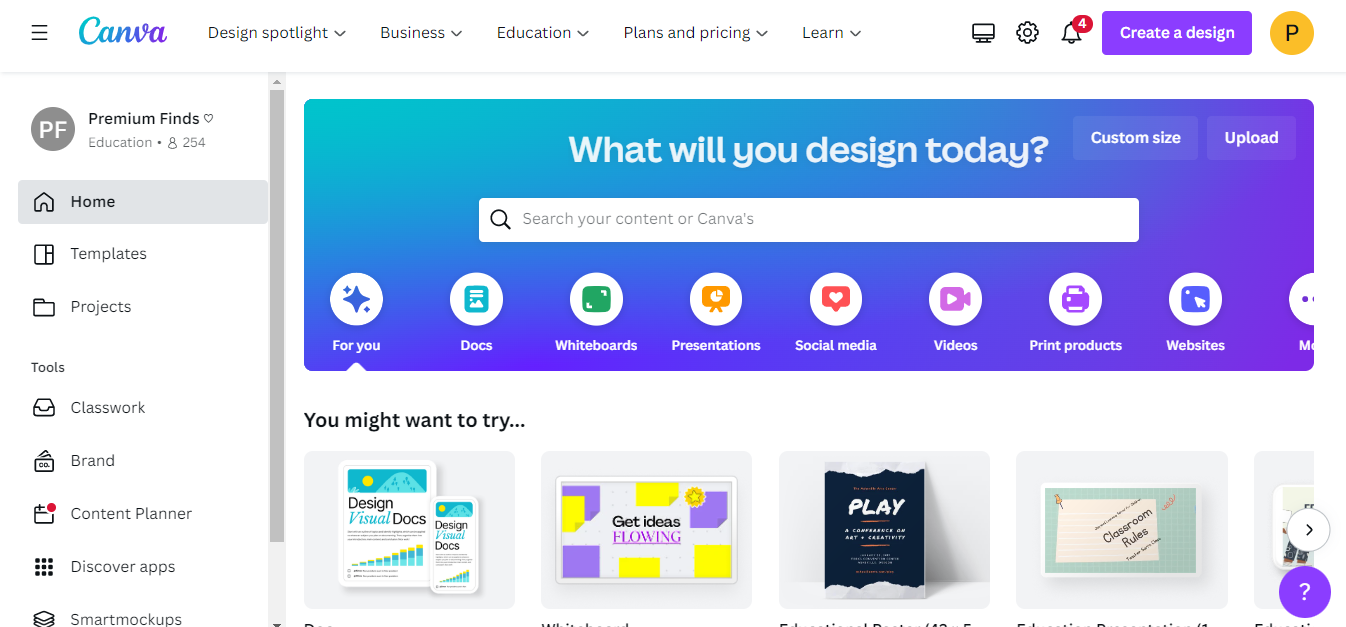
Canva makes it easy to design, even for marketers and salespeople who think they need to improve at it. The platform gives you many presentation templates you can use immediately, and it’s straightforward to change them to fit your organization and goal. In addition, it may use several apps with services like Google Drive, Instagram, and YouTube.
Microsoft Powerpoint
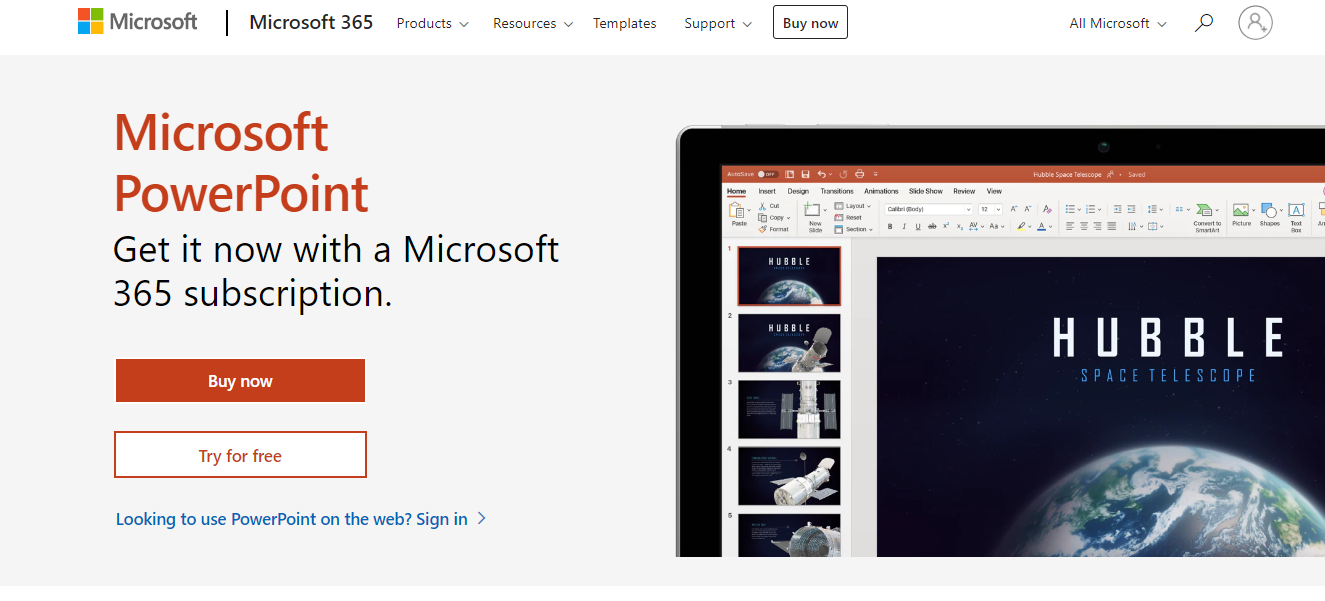
PowerPoint has been the standard presentation software for many years, but it hasn’t stayed the same. It has many features that make dynamic and interesting sales and marketing powerpoint presentations.
SlideDog
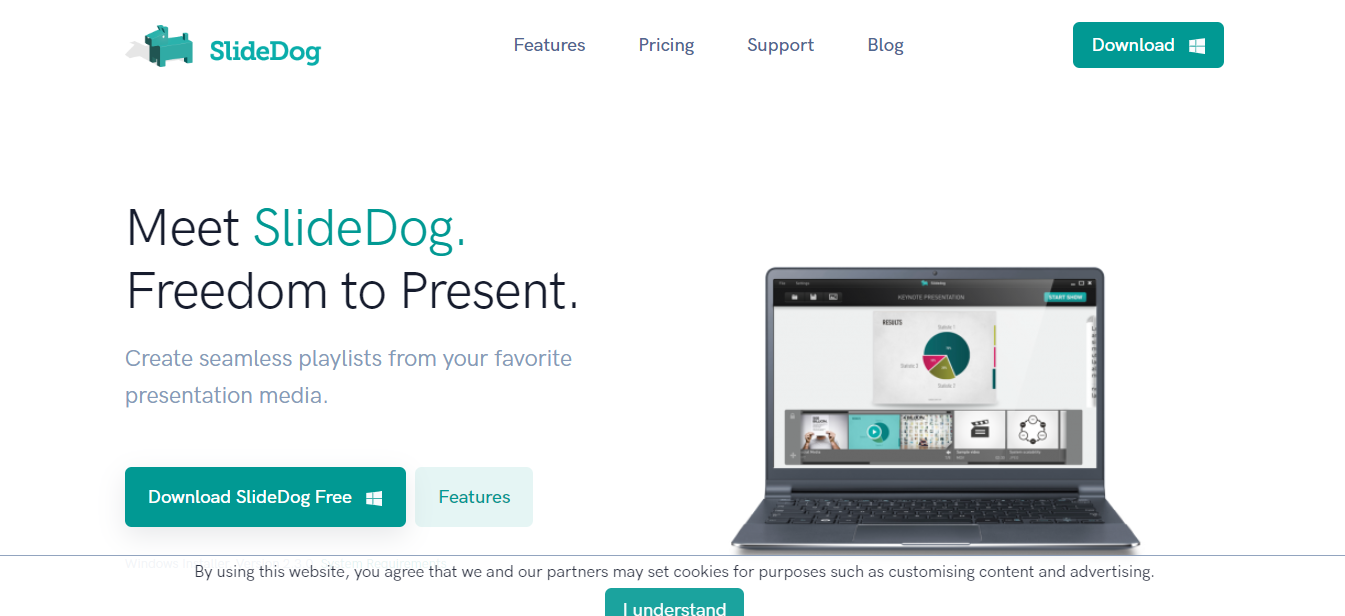
Professionals in sales and marketing need to be able to switch between presentation tools sometimes, but this is only occasionally possible due to their technology.
SlideDog is the answer because it lets users switch between PowerPoint, Prezi, PDF, web pages, and other things.
Prezi
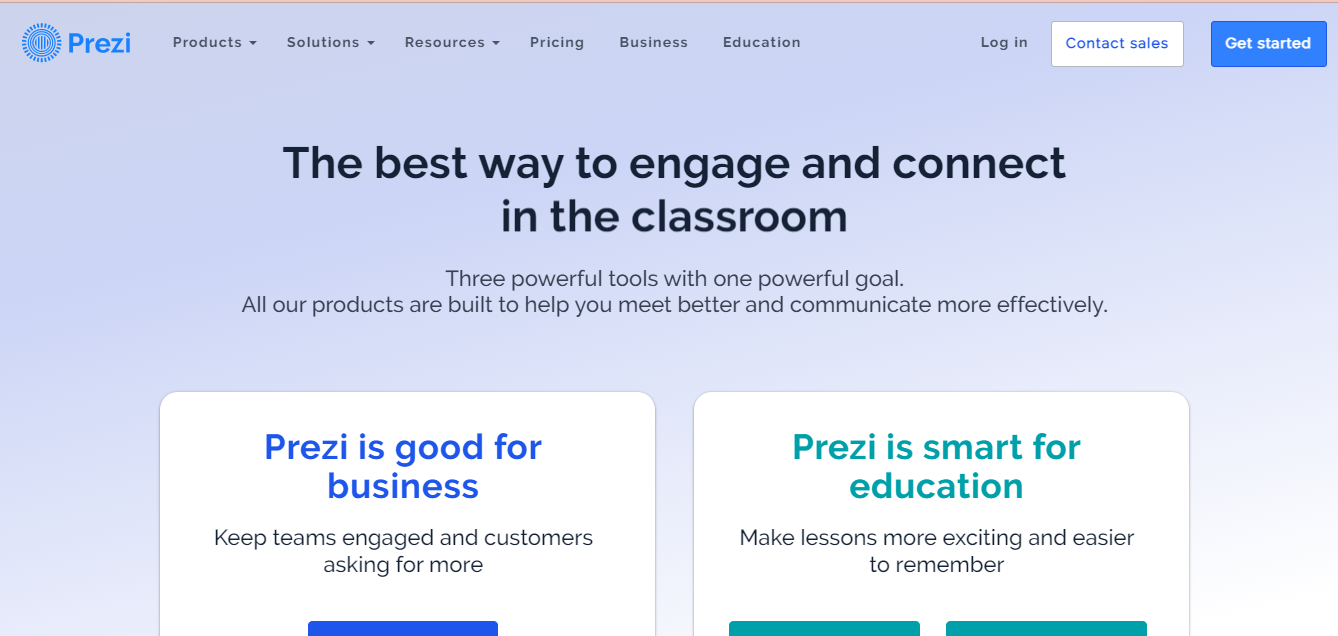
The fact that Prezi is a cloud-based presentation tool is a big plus for people in sales and marketing. With Prezi, you can create, edit, and present from your browser, desktop, iPad, or iPhone anytime and anywhere.
Slide Model
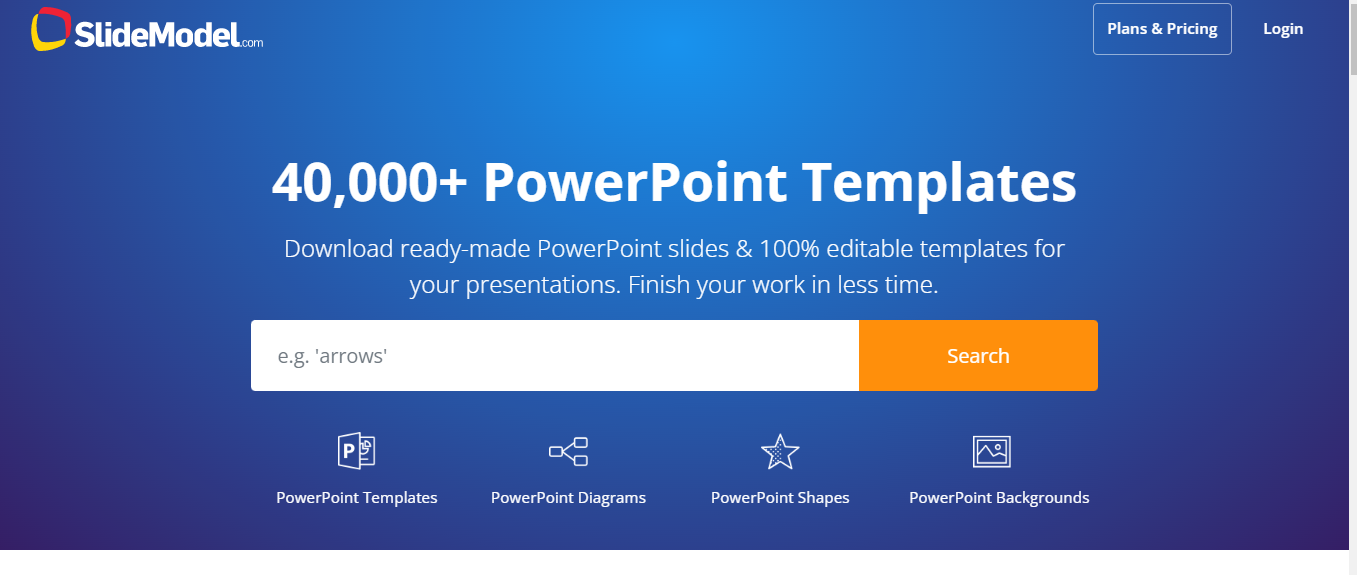
To help presenters create exciting and aesthetically beautiful presentations faster, SlideModel offers thousands of ready-made, fully editable templates. They have a variety of business-related presentation templates in their library, and they regularly add new educational and business-related ones.
Depending on the requirements you can find a variety of visually appealing slides on the site, including dashboards, original infographics, editable maps, funnels, timelines, mind maps, and presentation slides. Their PowerPoint and Google Slides-compatible slide designs are simple to update.
Haiku Deck
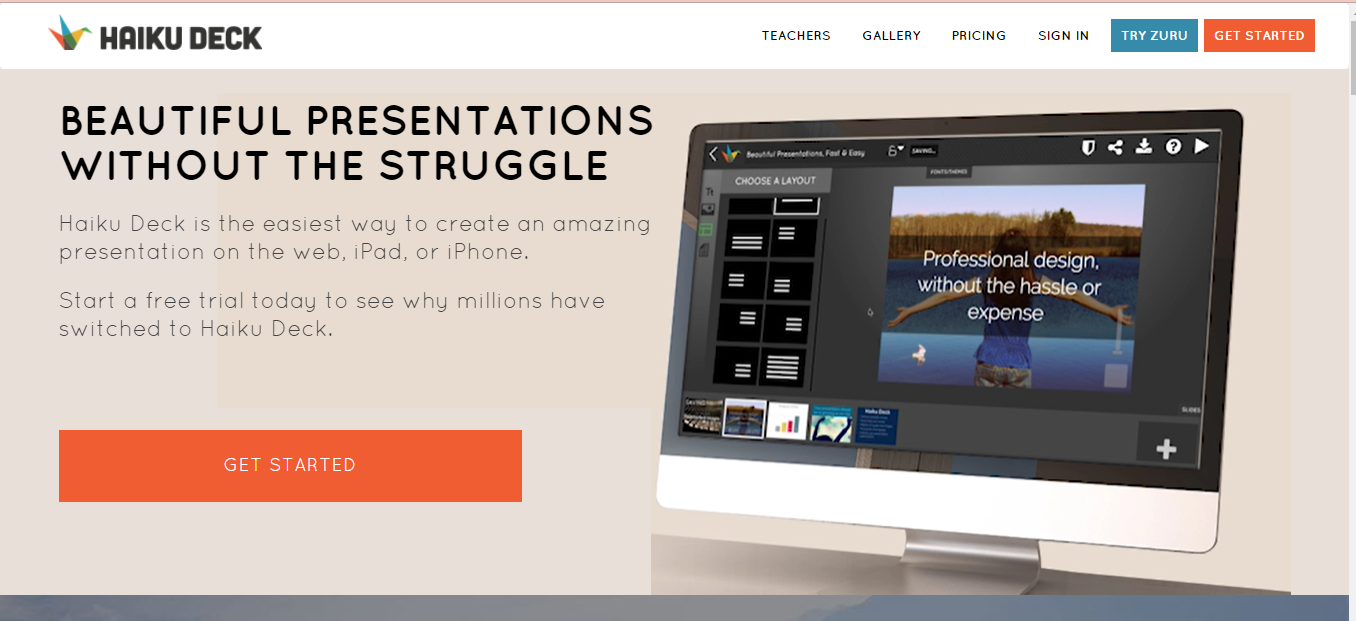
Haiku Deck, which is accessible through the web or iPad, has grown to be a favorite among sales and marketing experts. Professionals can swiftly create presentations with Haiku Deck that can be simply projected, shared, posted, embedded on a website or blog, or viewed on any web-enabled device.
Although it is another tool for creating from scratch, its simplicity makes it stand out from the competition.
Powtoon
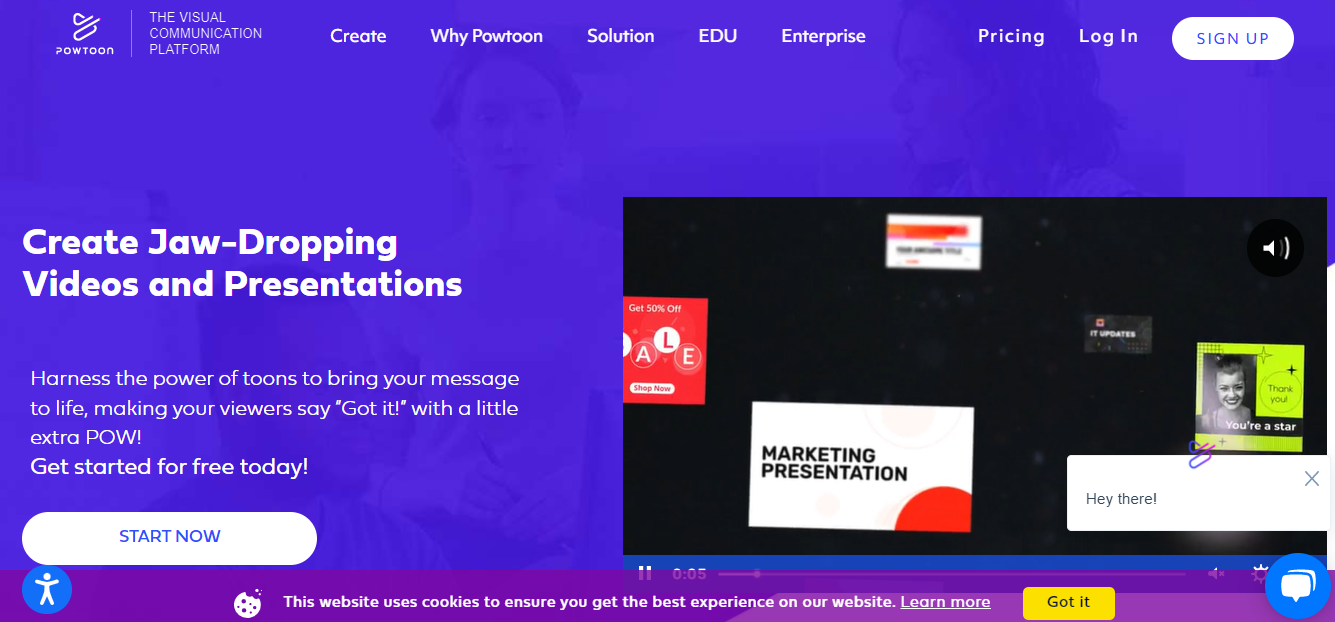
Powtoon can assist you in making your presentations stand out from the crowd, which draws potential customers. The animation software from Powtoon makes it simple to make video presentations with characters, props, and more, which can help you stand out from the competition when speaking with potential customers.
FAQs
What Are Presenting Tools Used For?
You can present data as a digital slideshow using presentation software. A slideshow’s slides can include links to other websites, audio, animation, video, text, photos, clipart, graphical data representations (charts), and more.
What Are The Presentation’s Four Ps?
Planning, preparation, practice, and performance are the four Ps of presentations. You must rehearse and plan and prepare it, as suggested by the four Ps. Lastly, you should pay attention to how you do during your presentation to make sure you use your skills impressively.
What Are The Characteristics Of A Good Presentation?
a. It’s well-rehearsed.
b. Your audience benefits.
c. It has a particular goal.
d. Your presentation deck contains as little text as feasible.
e. Contact information is apparent.
f. A call-to-action is included.
Final Thoughts
To interact well with your audience, you should use the presentation slides along with some techniques and ways to use tools in this article. It will make it easier for your audience to pay attention, help them remember your key points, and ultimately help you deliver a more effective and exciting presentation.






